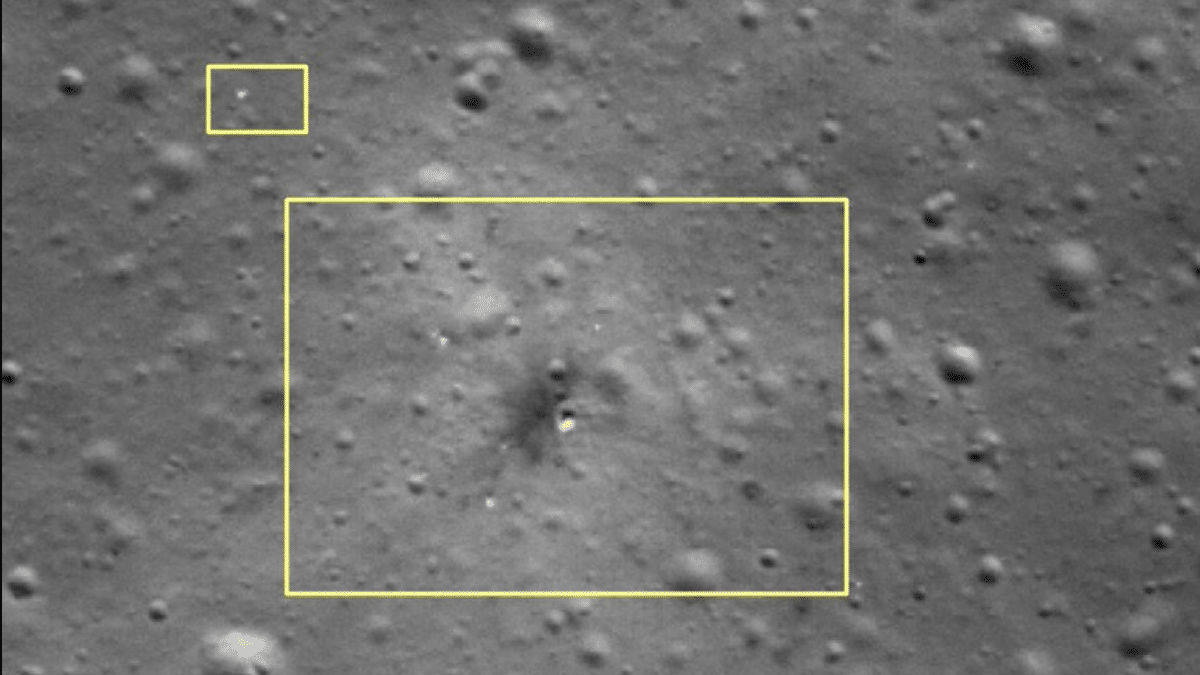NASA and ISRO Confirm Japan’s Moon Lander Resilience Crash

NASA’s Lunar Reconnaissance Orbiter (LRO) and India’s Chandrayaan-2 orbiter have provided crucial images of Japan’s Resilience lunar lander, which tragically crashed on the Moon during its landing attempt on June 5. Developed by the private company ispace, Resilience was on a mission to deliver scientific experiments and the European lunar rover, Tenacious, to the Mare Frigoris region. The lander lost contact just 100 seconds before its scheduled touchdown, and the newly released images confirm the lander’s fate, revealing debris scattered across the impact site.
Crash Site Images Reveal Debris Field
On June 11, 2025, NASA’s LRO captured images of the crash site, showing a dark smudge of disturbed lunar soil where Resilience impacted the surface. Following this, India’s Chandrayaan-2 orbiter took additional images on June 16, providing a clearer view of the debris field. Astronomy experts have identified at least a dozen fragments from the lander and the Tenacious rover in these photographs. One space enthusiast cataloged a minimum of 12 distinct debris items, although the exact distribution remains uncertain. Surrounding the impact site is a faint bright halo of ejected dust, indicative of a violent collision. These detailed images are essential for investigators working to understand the circumstances that led to Resilience’s disintegration upon impact.
Laser Rangefinder Fault Pinpointed as Cause
Investigations into the crash have revealed that a malfunction in Resilience’s onboard laser altimeter was a critical factor in the failure. Approximately 100 seconds before landing, the altimeter began to lag, resulting in the lander descending too quickly. On June 24, ispace confirmed that this malfunction prevented Resilience from slowing down to the intended touchdown speed. The resulting hard impact “likely tore the spacecraft apart,” leading to the destruction of all scientific instruments on board. Investigators are currently exploring various factors, such as lunar surface reflectivity and potential hardware degradation, that may have contributed to this failure. Notably, Resilience was ispace’s second Hakuto-R moon lander, following the crash of its predecessor in April 2023. Despite this setback, CEO Takeshi Hakamada expressed confidence in the company’s ability to address these issues and continue pursuing future lunar missions.
Future Prospects for ispace
Despite the challenges faced by ispace with the Resilience mission, the company remains committed to its lunar exploration goals. CEO Takeshi Hakamada emphasized that the recent failure will not deter their ambitions. The company is actively working on solutions to prevent similar issues in future missions. As ispace prepares for its next endeavors, the focus will be on enhancing the reliability of their technology and ensuring successful landings on the Moon. The lessons learned from the Resilience mission will play a crucial role in shaping the company’s future strategies and innovations in lunar exploration. With a growing interest in lunar missions globally, ispace aims to contribute significantly to the next era of space exploration.
Observer Voice is the one stop site for National, International news, Sports, Editor’s Choice, Art/culture contents, Quotes and much more. We also cover historical contents. Historical contents includes World History, Indian History, and what happened today. The website also covers Entertainment across the India and World.

